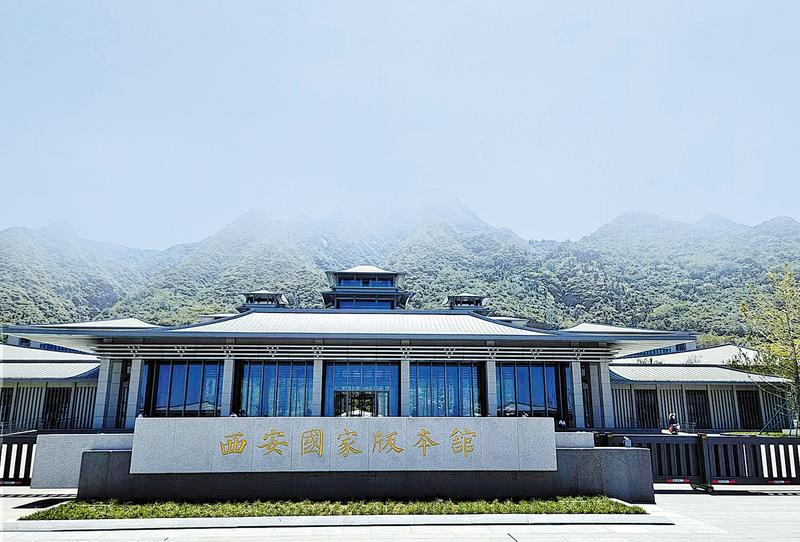 Xian. (PHOTO PROVIDED TO CHINA DAILY)
Xian. (PHOTO PROVIDED TO CHINA DAILY)
With a past stretching back millennia, Xi'an, Shaanxi province, has a proud history of preserving its traditions and heritage. It is home to the Terracotta Warriors, the Big Wild Goose Pagoda and an ancient city wall. It is also the cradle of the ancient Silk Road trade route.
In addition to these marvels, the city has inaugurated the National Archives of Publications and Culture of Xi'an, also called Wenji Ge, to preserve items from its past. Viewed as the country's "cultural seed bank", the Xi'an branch focuses on China's Northwest culture, well known for the cosmopolitan Tang Dynasty (618-907). Covering an area of about 200,000 square meters, the pavilion leans against the Qinling Mountains and faces the Weishui River, about an hour's drive from the downtown area.
The architectural elements of the Han (206 BC-AD 220) and Tang dynasties can be seen in the construction of the Wenji Ge. Designed by architect Zhang Jinqiu, the venue covers some 82,500 square meters.
"The main design principle is the harmony between people and nature, reproducing the architectural style of the Han and Tang dynasties," Guangming Daily quoted Zhang as saying.
"The site is located on a slope with an angle of more than 15 degrees and a rise of 70 meters," Zhang says, adding that architects designed the foundation to properly mitigate the angle of incline. Consequently, the foundation is built with retaining walls, some with woven strips of bamboo for a natural look.
After starting construction in 2019, the project was completed on April 15 and an inauguration ceremony was held on July 30. It has four major areas: exhibition, preservation, tunnel-storage and communication.
Housing more than 2 million records, including books and newspapers, as well as audio and video tapes, the Xi'an branch has two sculptures of mythical beasts-Tianlu and Qilin-sitting in its front hall. They guard a 90-meter-long and 20-meter-high wall that holds about 50,000 books. It also holds 160 terabytes of digital resources. A single terabyte can hold the text of roughly 1 million books.
Tianlu and Qilin are legendary hybrid creatures considered to bring good luck and fortune. Since ancient times, China's rulers have attached great importance to the storage of books and records in libraries. The Han Dynasty imperial family kept a sizable library known as the Tianlu Ge in Chang'an (now Xi'an) and, during the Song Dynasty (960-1279), classical academies throughout the country housed collections of books for scholarly use. "Reflecting the cultural heritage in Shaanxi, we organized two exhibitions to mark the opening of the Xi'an branch of the National Archives of Publications and Culture," Hao Huijie, director of the provincial publicity department says. Hao adds that one is focused on Chinese cultural classics, covering more than 2,000 square meters and featuring 1,743 items, and the other covers 772 sq m and exhibits about 600 items, mainly publications, reflecting the cultural heritage along the Silk Road. Xi'an became the starting point of the Silk Road during the Han Dynasty, making it a hub of international communication between China and the outside world.
The Silk Road exhibition has five sections, categorized by time, showing how the ancient trade route has evolved and is linked to various cultures. A key crossroads between China and the rest of the world, Xi'an is the eastern starting point of the route.
Wenji Ge will combine the cultural characteristics of western China and fully display the civilization of the Silk Road, according to Hao.
As well as the two exhibitions, there is a library and a virtual reality experience area open to the public. In the reading area, people with impaired vision can access computers with assistive technology. Seminars and lectures on cultural studies and research will also be held there.


